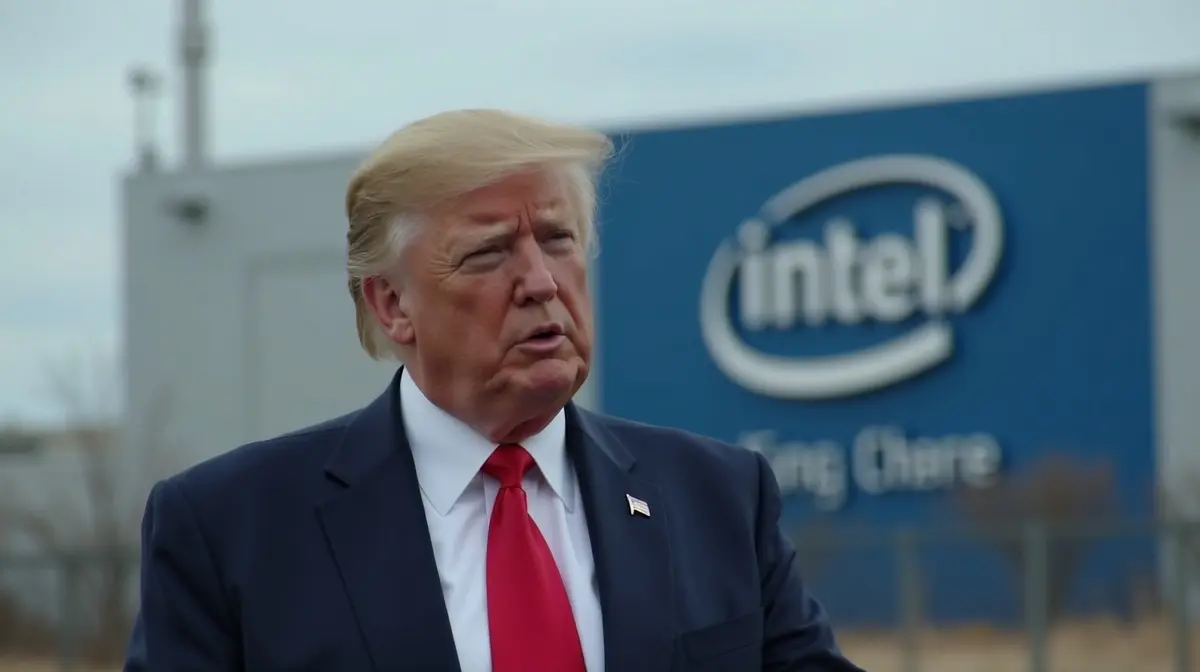Don’t be fooled by the celebratory press releases. The jaw-dropping news that Nvidia is injecting $5 billion into its ailing archrival Intel and co-developing chips isn’t about partnership; it’s a predatory masterstroke. This isn’t a lifeline being thrown to a struggling peer—it’s the AI kingpin putting a very expensive, very strategic leash on the old emperor of Silicon Valley.
Key Takeaways
- The Deal: Nvidia will invest $5 billion for a roughly 4% stake in Intel. The two giants will jointly develop new chips for data centers and consumer PCs, marrying Intel’s x86 CPUs with Nvidia’s GPU and AI technology.
- The Big Omission: The deal conspicuously excludes any commitment for Intel’s foundry business to manufacture Nvidia’s chips. This is a brutal vote of no-confidence in Intel’s ability to compete with manufacturing leaders like TSMC.
- It’s Not a Partnership of Equals: This alliance comes just weeks after the U.S. government took an extraordinary 10% stake in Intel to prop it up. Intel is operating from a position of weakness, needing cash and customers, while Nvidia is dictating the terms from the height of its power.
- Strategic Control: For Nvidia, this isn’t charity. It’s a calculated move to gain influence over the massive x86 ecosystem, create a captive market for its RTX graphics chiplets, and score major political points in Washington amid ongoing US-China trade tensions.
The Devil in the Details
On the surface, the collaboration announced by CEOs Jensen Huang and Lip-Bu Tan sounds like a dream team. For data centers, Intel will build custom x86 CPUs that Nvidia will package with its own world-beating AI chips, connected by its proprietary high-speed NVLink. For your next laptop, Intel will build new System-on-Chips (SoCs) that integrate Nvidia’s RTX graphics as chiplets, as detailed in the joint statement. It’s the PC equivalent of, as one PCGamer writer put it, “cats and dogs living together.”
Intel’s stock soared over 30% on the news, a euphoric reaction from investors desperate for a win after the company hit its lowest point in over a decade earlier this year. But read the fine print—or rather, what’s not in the fine print. As multiple reports confirmed, the deal pointedly avoids having Intel’s foundries—the factories that are the cornerstone of its turnaround plan—manufacture any of Nvidia’s flagship silicon. For Intel’s foundry business to survive, analysts believe it needs a whale like Nvidia or Apple. Instead of a life-saving contract, Huang handed Intel a compliment and a check, all while keeping his most important business with Intel’s primary rival, TSMC.
A Calculated Power Play
Let’s call this what it is: a lifeline for a struggling rival, but one with many strings attached. Intel, once the undisputed flagbearer of Silicon Valley, has spent years failing to pivot. Just last month, its financial position was so shaky that the Trump administration engineered a deal to take a 10% stake in the company.
Enter Nvidia, a $4 trillion behemoth whose CEO is getting invited to state dinners at Windsor Castle. The $5 billion investment is pocket change for Nvidia, but it accomplishes several brilliant objectives. First, it effectively neutralizes a competitor. By embedding its technology deep within Intel’s product stack, Nvidia ensures its architecture becomes even more indispensable. It gets to leverage Intel’s massive x86 market share to fend off AMD, which now faces a terrifying two-front war against a combined Intel-Nvidia product in both PCs and data centers.
Second, it’s a political masterstroke. Nvidia has been navigating a minefield of US-China trade tensions, particularly over its ability to sell AI chips to Chinese companies. By throwing its weight behind an American industrial champion—a move no doubt favored by the White House—Nvidia is buying an ocean of goodwill. As one analyst told Reuters, the move helps Nvidia “gain some brownie points with the U.S. government” at a critical time.
Why It Matters
This isn’t a story about collaboration; it’s about control. Jensen Huang isn’t saving Intel out of the goodness of his heart. He is strategically handcuffing a weakened giant to secure his own AI empire.
By tying Intel’s CPUs to Nvidia’s AI stack, he ensures Nvidia’s ecosystem (CUDA and NVLink) remains the unquestioned industry standard. By forcing Intel to integrate RTX chiplets into its consumer products, he creates a vast new, captive channel for his graphics IP, likely dealing a fatal blow to Intel’s own struggling Arc graphics ambitions.
And by withholding a foundry contract, he sends a clear, devastating message: Intel’s past (x86 CPUs) is useful to me, but its future (manufacturing) is not. Nvidia gets to dictate the terms, leveraging Intel’s legacy while strangling its future ambitions in the crib. Intel gets a cash infusion and a temporary stock bump, but it comes at the cost of its autonomy. It’s no longer the master of its own destiny. Instead, it’s becoming a vassal, a vital but subordinate part of Nvidia’s sprawling kingdom.
Conclusion
The press conference will be full of platitudes about a “fusion of two world-class platforms.” But the reality on the ground is far more brutal. This deal isn’t about building the next era of computing together. It’s about Nvidia ensuring that the next era of computing runs exclusively on its terms. For a mere $5 billion, Nvidia didn’t just invest in a rival; it bought a leash for it, securing its dominance and turning the once-mighty Intel into a well-funded, well-managed subsidiary of the Nvidia empire in all but name.
Sources
- CNBC: Intel surges 30% as Nvidia to invest $5 billion in chipmaker, co-develop data center and PC chips
- Reuters: Nvidia bets big on Intel with $5 billion stake, chip partnership
- Nvidia Newsroom: NVIDIA and Intel to Develop AI Infrastructure and Personal Computing Products
- PCGamer: Intel and Nvidia announce stunning plans to combine their CPU and GPU products for both consumer PCs and AI servers, with Nvidia taking a $5 billion stake in Intel
- Bloomberg: Nvidia Invests $5 Billion in Intel With Plans to Co-Design Chips
- The New York Times: Nvidia to Invest $5 Billion in Rival, Intel
- Investor’s Business Daily: China Probes U.S. Chip Sector With Trade Talks On Tap







